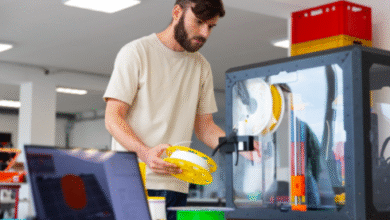Rivian, an electric vehicle manufacturer, had announced plans to offer a home wall charger for its vehicles. The installation process for an electric vehicle (EV) wall charger is generally straightforward, but it should be done by a qualified electrician to ensure safety and compliance with local electrical codes. Here’s a general guide on how to install an EV wall charger, but please refer to the specific installation instructions provided by Rivian for their charger:
Materials You’ll Need:
- Rivian wall charger
- Electrical panel with available capacity
- Appropriate circuit breaker
- Electrical wires (typically 8 or 6-gauge wire depending on charger requirements)
- Conduit and fittings (if required by local codes)
- Wall-mounting hardware
- Wire connectors (wire nuts)
- Junction box (if required)
- Voltage tester
- Screwdriver and pliers
- Cable anchors and clips (if required)
- Level
Step-by-Step Guide:
1. Plan the Installation:
- Choose a location for the charger that is within reach of your vehicle’s charging port.
- Check the charger’s specifications for the required voltage and amperage. Ensure your electrical panel can support these requirements.
- Determine the path for running the electrical conduit and wiring from the electrical panel to the charger location.
2. Turn Off the Power:
- At the electrical panel, turn off the power to the circuit where the charger will be installed by switching off the corresponding circuit breaker.
3. Install the Electrical Conduit (if required):
- If local electrical codes require conduit, run the conduit from the electrical panel to the charger location. Attach conduit fittings as needed.
4. Mount the Charger:
- Securely mount the Rivian wall charger on the wall using the provided wall-mounting hardware and a level to ensure it’s straight.
5. Connect the Wiring:
- Follow the manufacturer’s instructions for connecting the electrical wiring to the charger. Typically, this involves connecting the wires to the appropriate terminals on the charger.
6. Connect the Wiring to the Electrical Panel:
- At the electrical panel, connect the other end of the wiring to the appropriate circuit breaker. Ensure the circuit breaker is compatible with the charger’s electrical requirements.
7. Install a Junction Box (if required):
- Some installations may require a junction box between the charger and the electrical panel. Follow local electrical codes and the charger manufacturer’s instructions if a junction box is necessary.
8. Secure and Route Wiring:
- Secure the wiring to the wall using cable anchors and clips as needed, ensuring it is neat and not hanging loosely.
9. Test the Voltage:
- Use a voltage tester to verify that there is no power in the wiring before proceeding.
10. Turn On Power:
- Turn on the circuit breaker for the charger at the electrical panel.
11. Test the Charger:
- Test the charger by plugging in your Rivian electric vehicle and confirming that it charges properly.
12. Final Inspection:
- Consider having a qualified electrician inspect the installation to ensure it meets local electrical codes and safety standards.
Please note that the installation process may vary depending on your specific charger model, local electrical codes, and the layout of your home. Always refer to the installation instructions provided by Rivian and consult a qualified electrician for guidance if you have any doubts or questions during the installation process. Electrical work should be performed by a licensed electrician to ensure safety and compliance with local regulations.
Also Read:
https://infusionpost.com/how-to-install-a-chandelier-on-a-sloped-ceiling/
https://infusionpost.com/how-to-install-a-chandelier-on-a-sloped-ceiling/
https://infusionpost.com/how-to-install-a-cupola-on-a-metal-roof/



